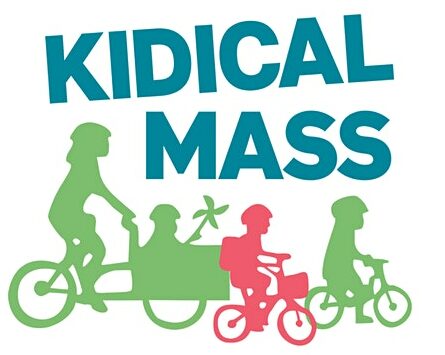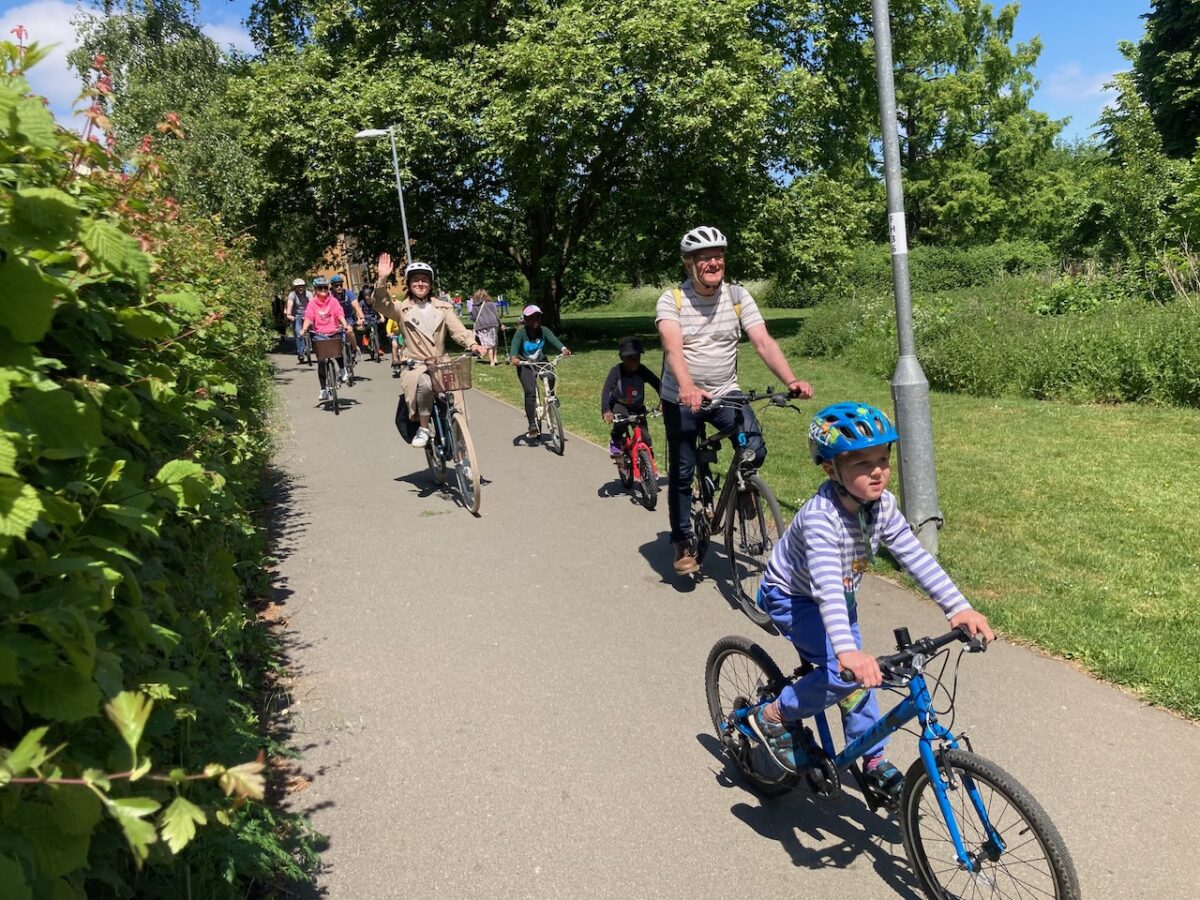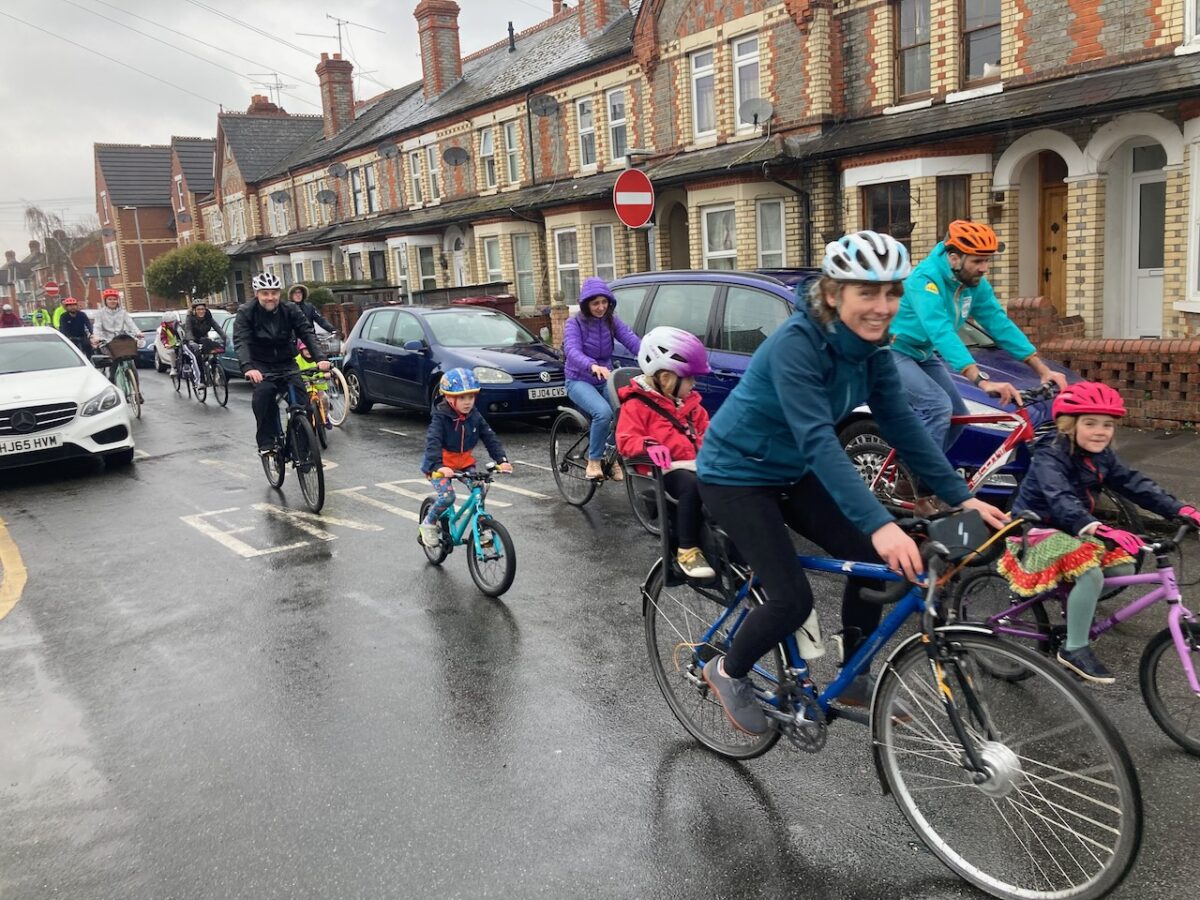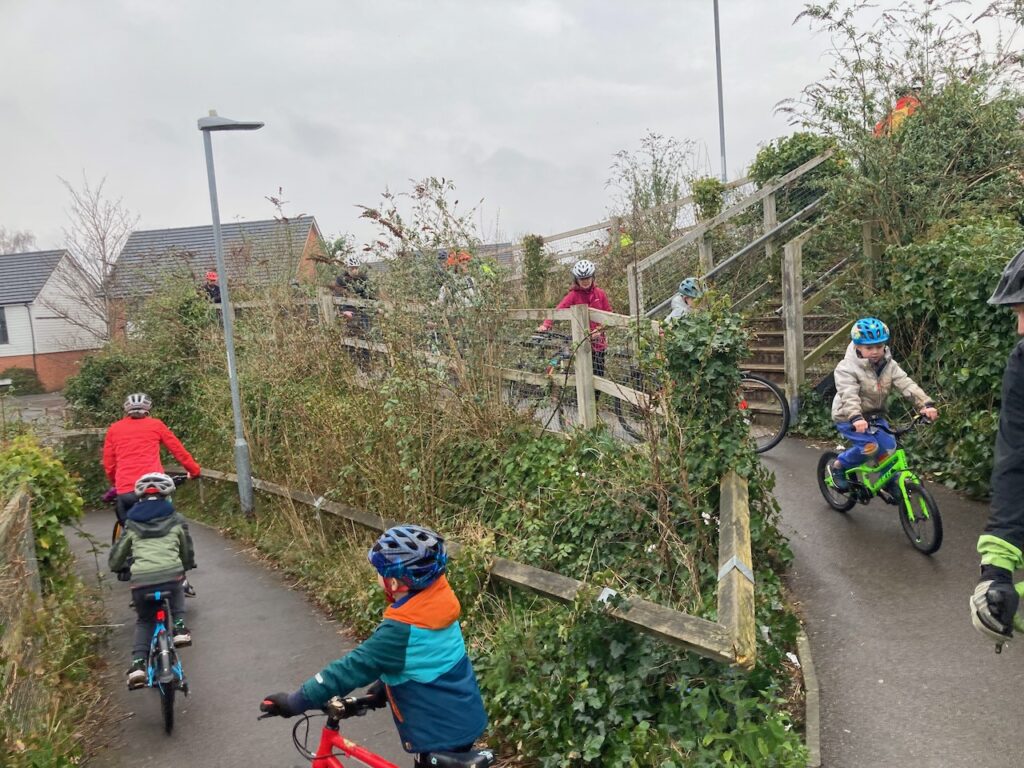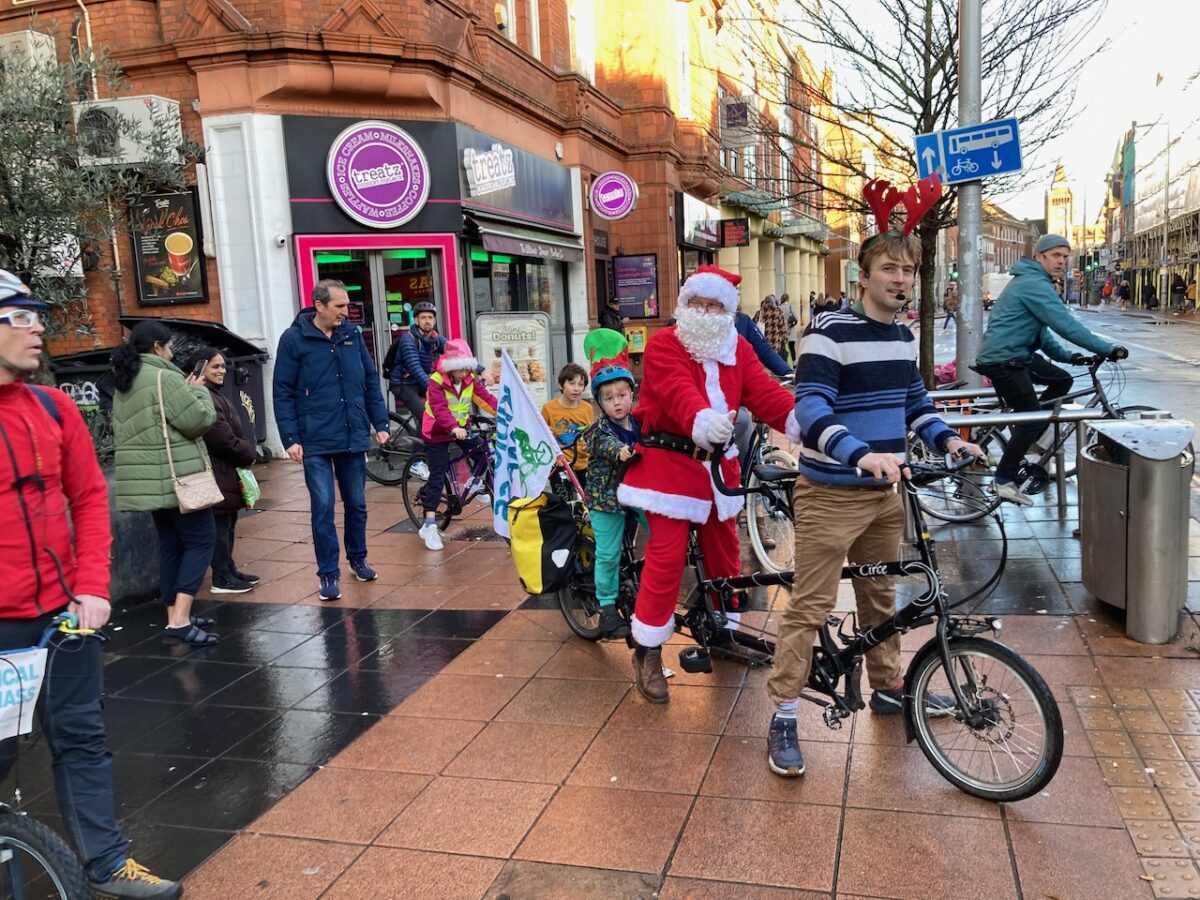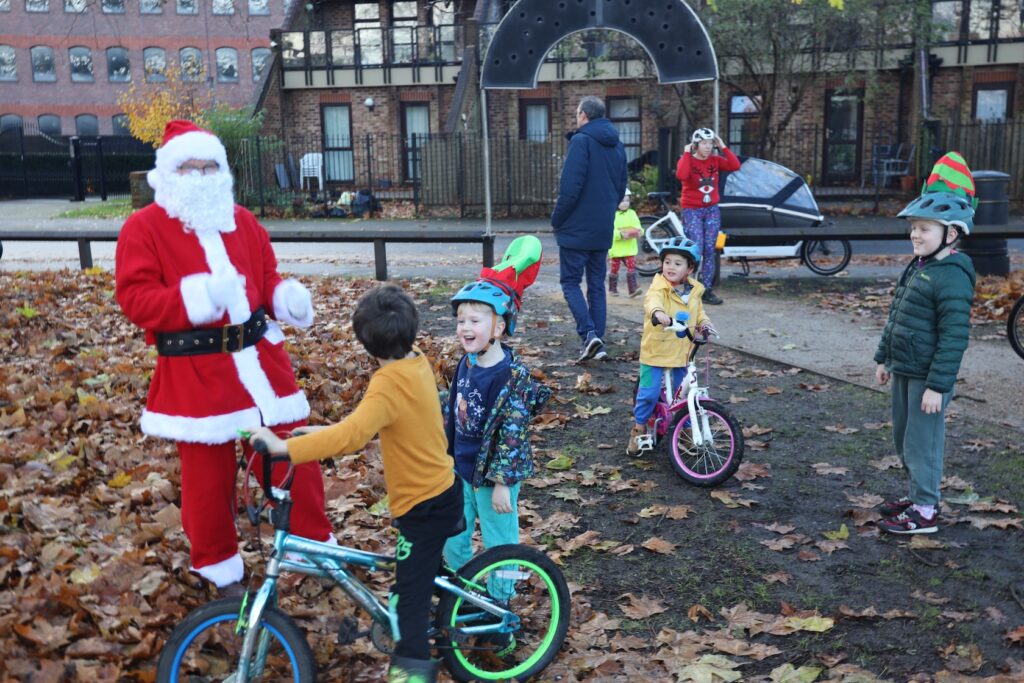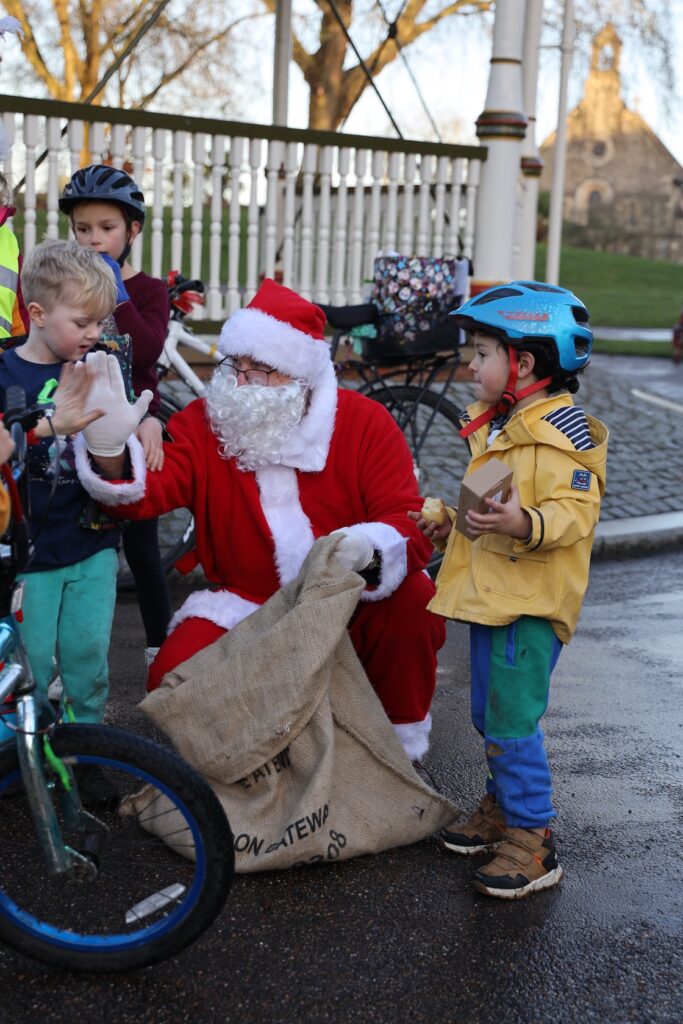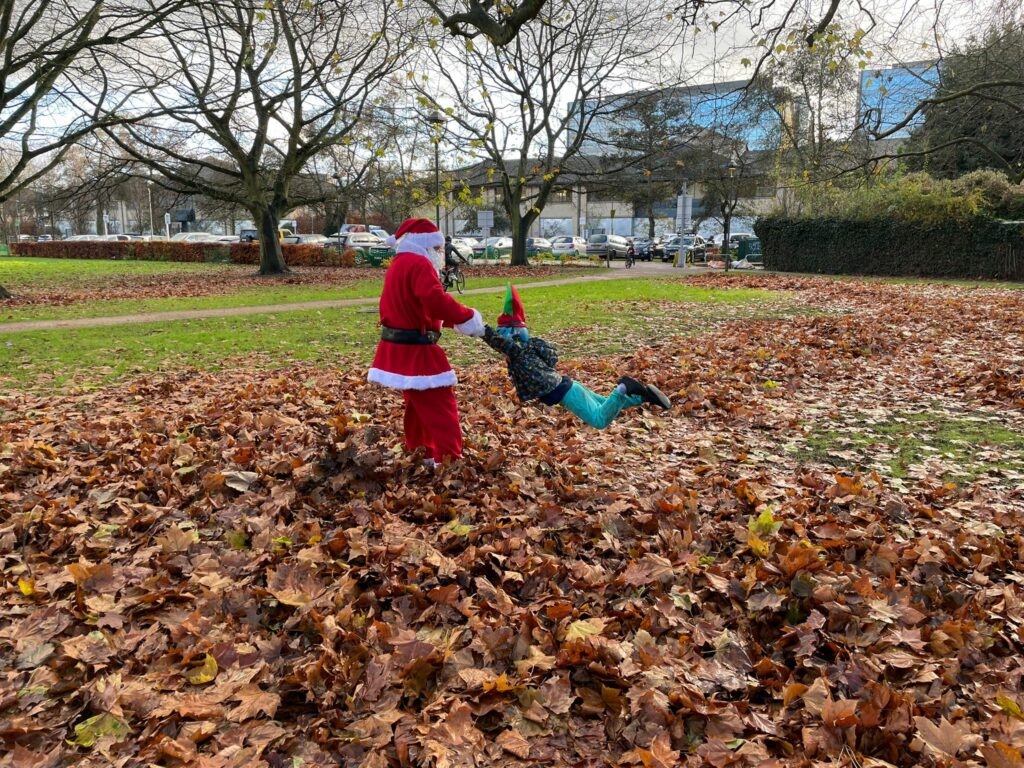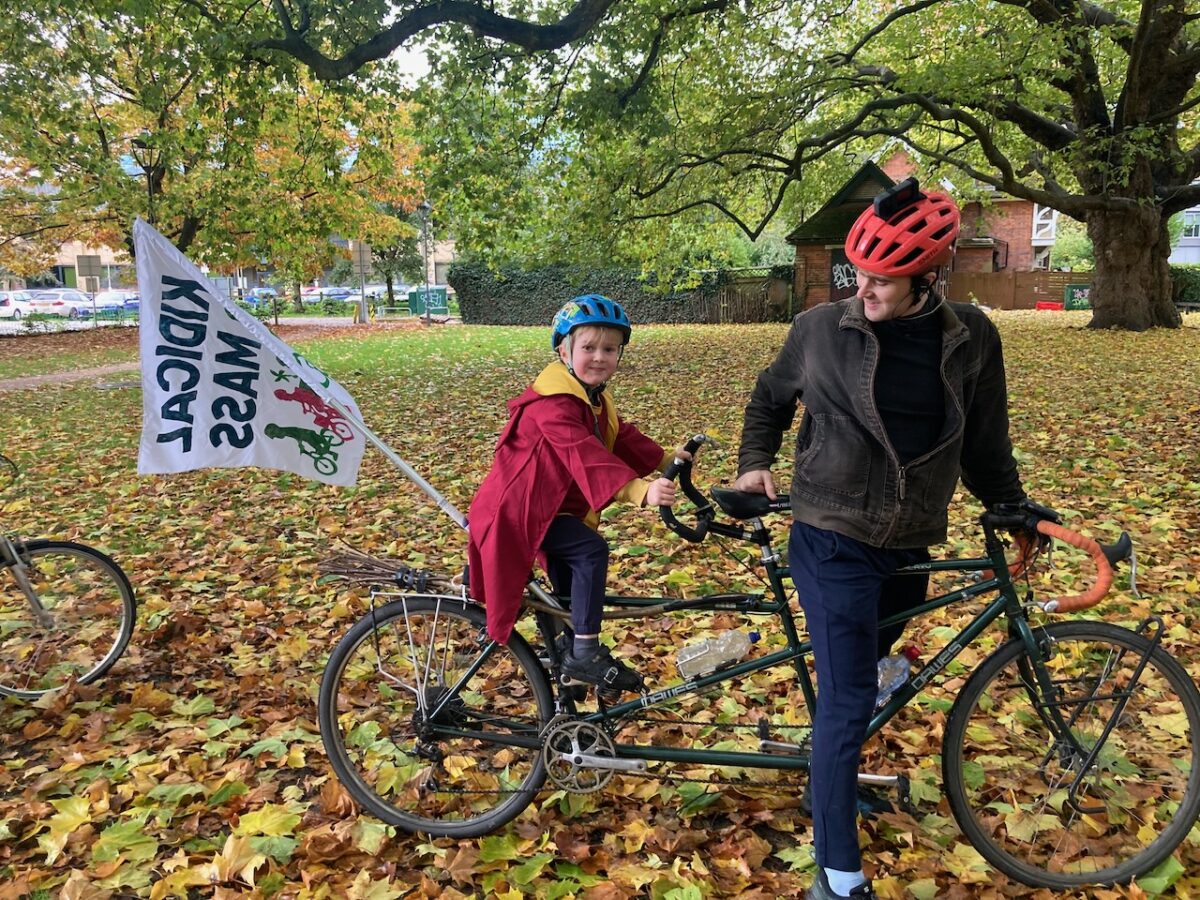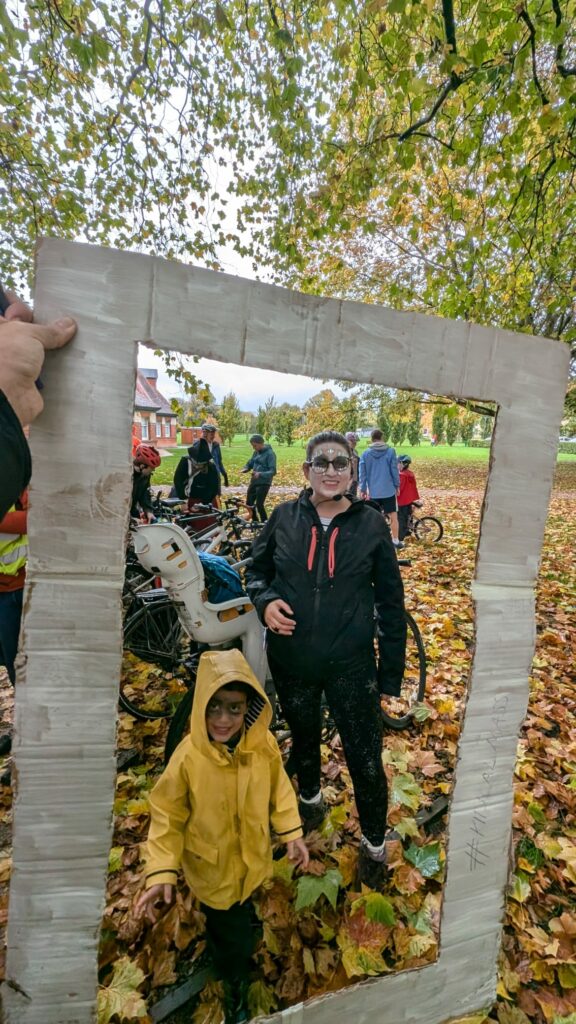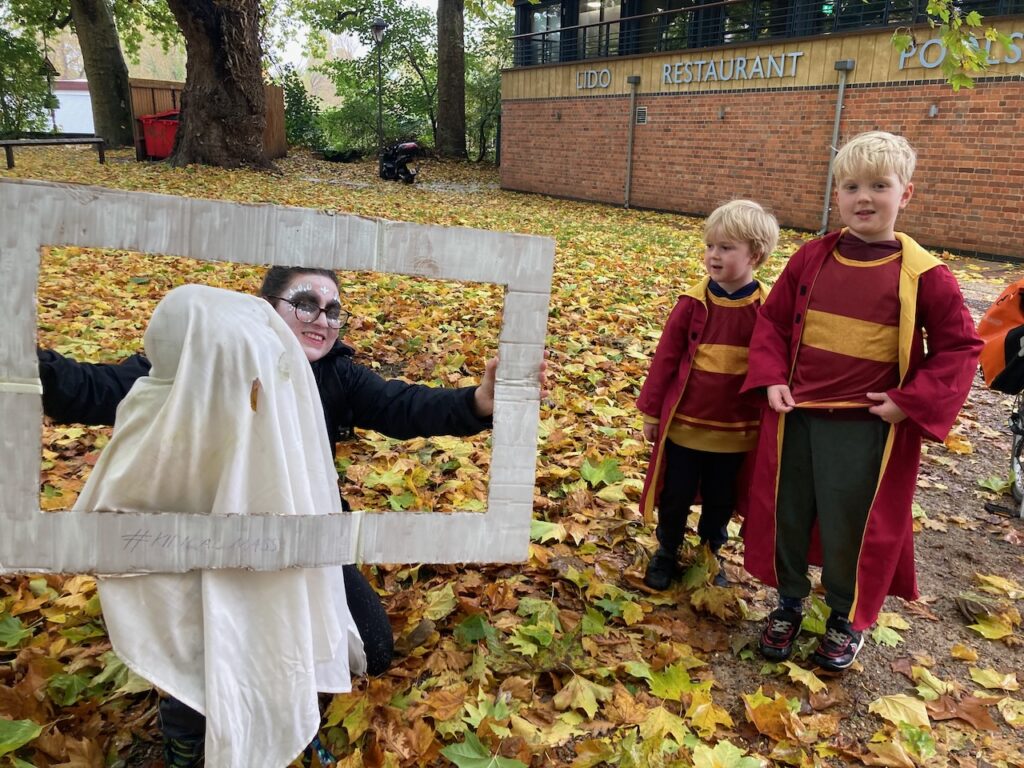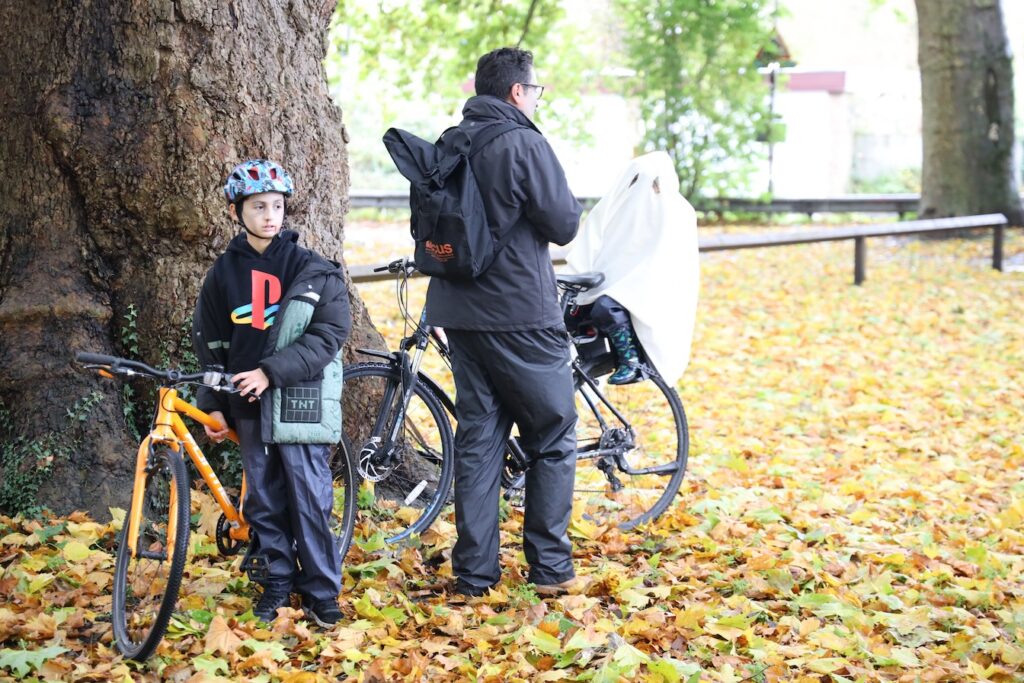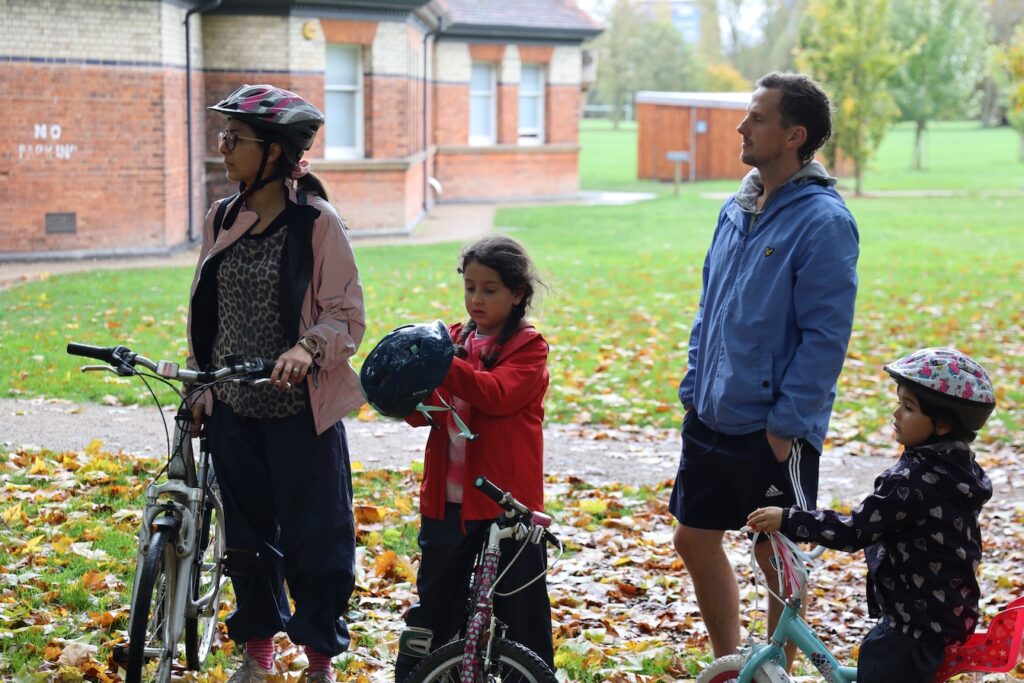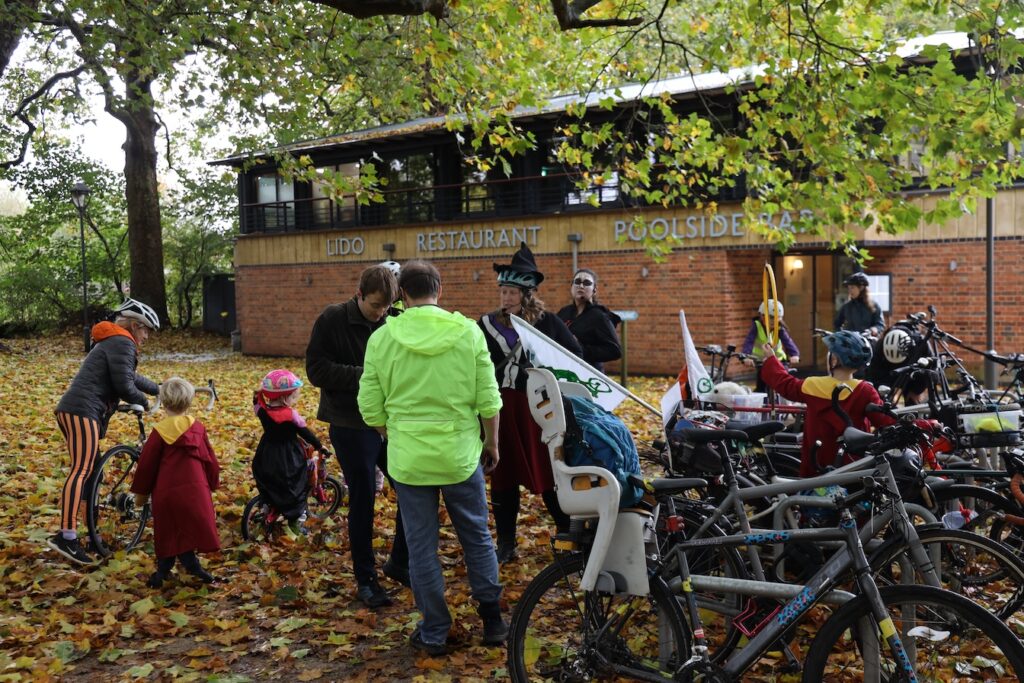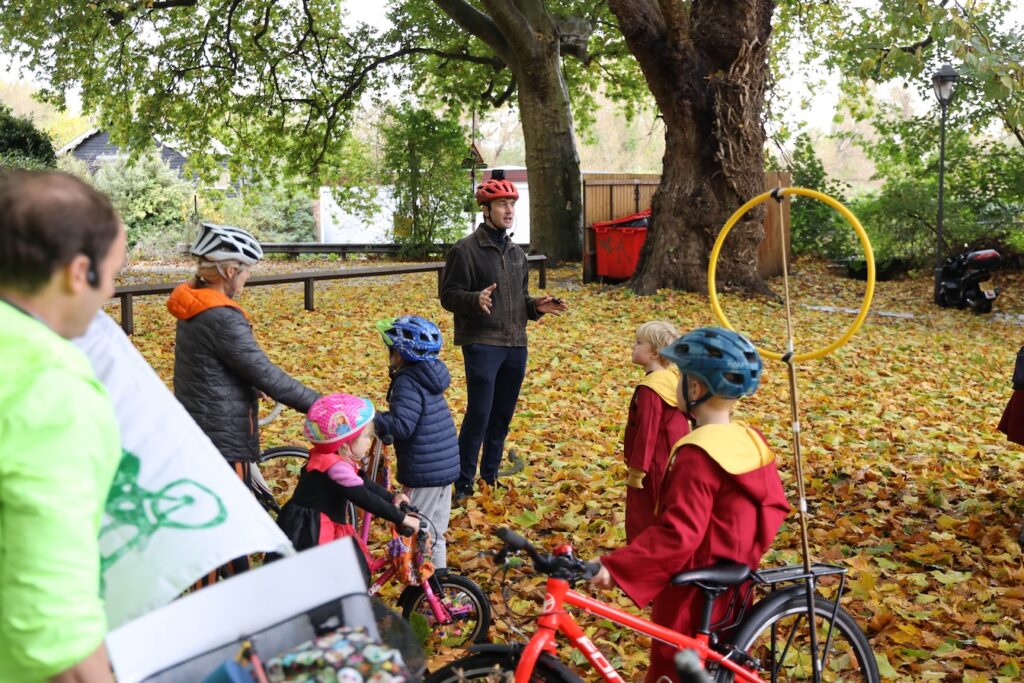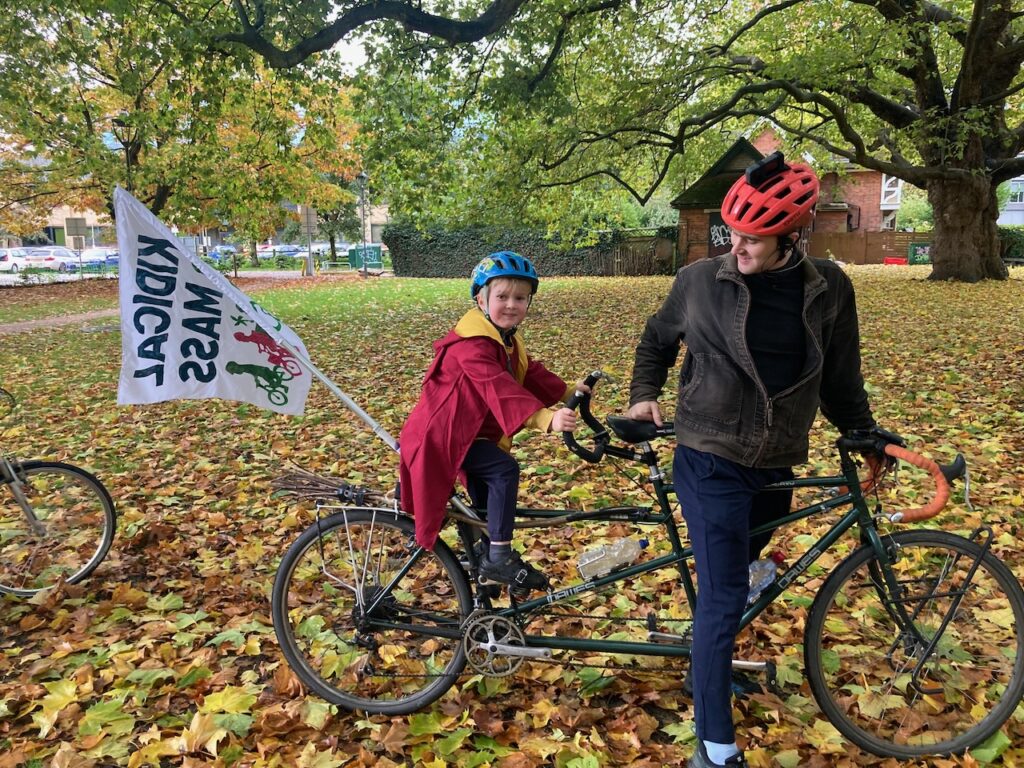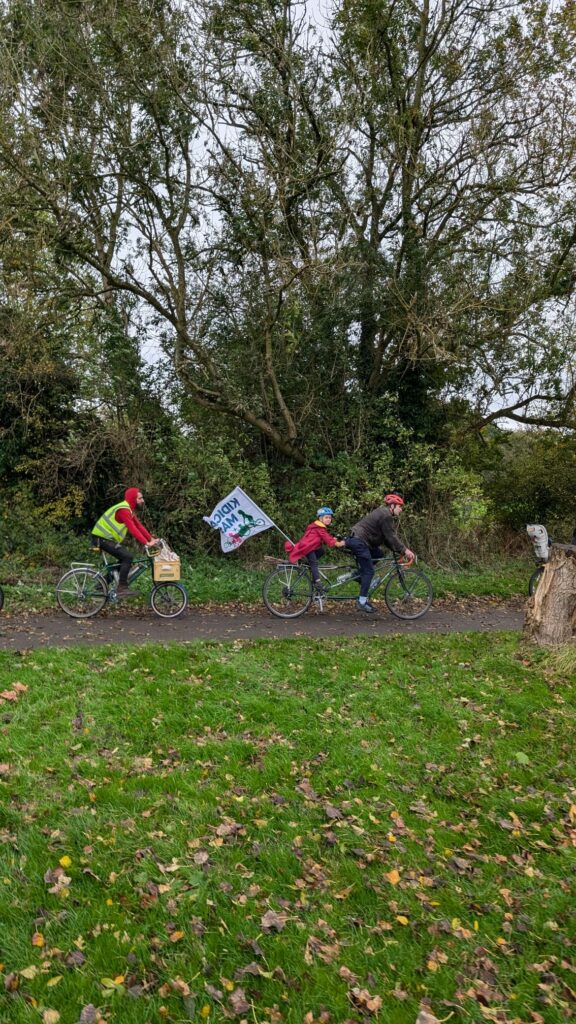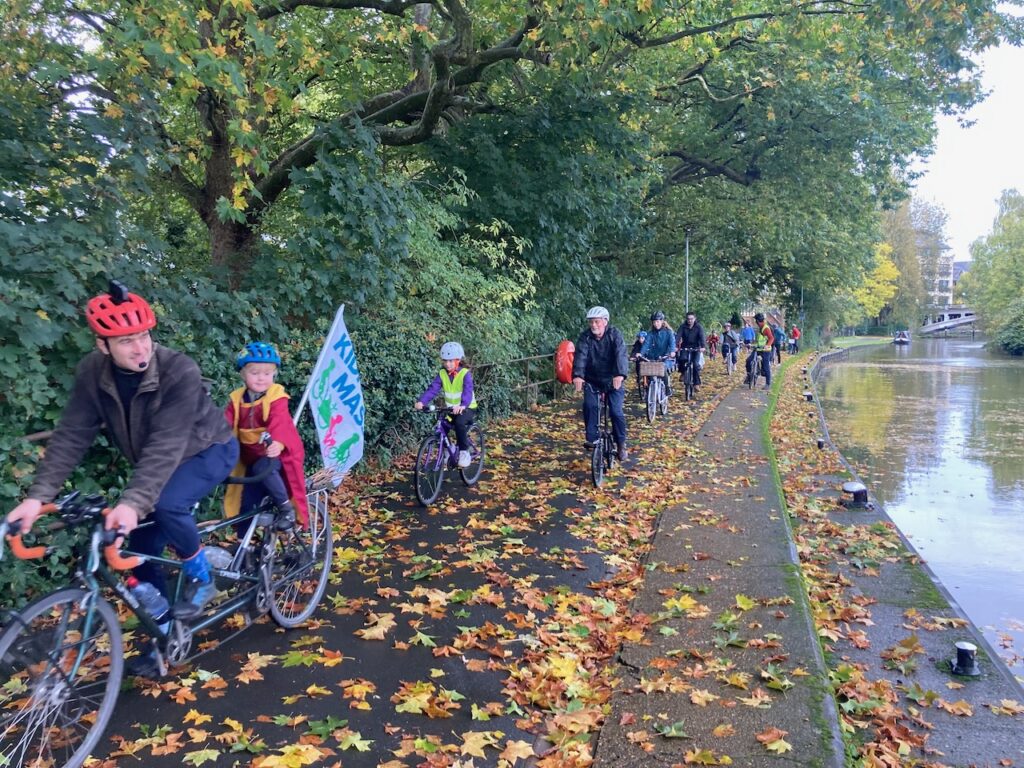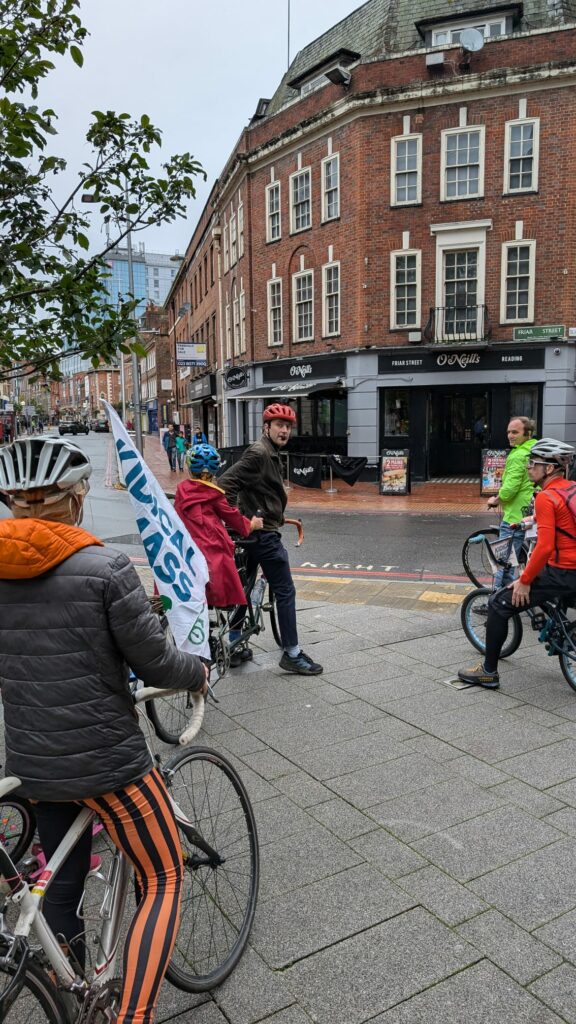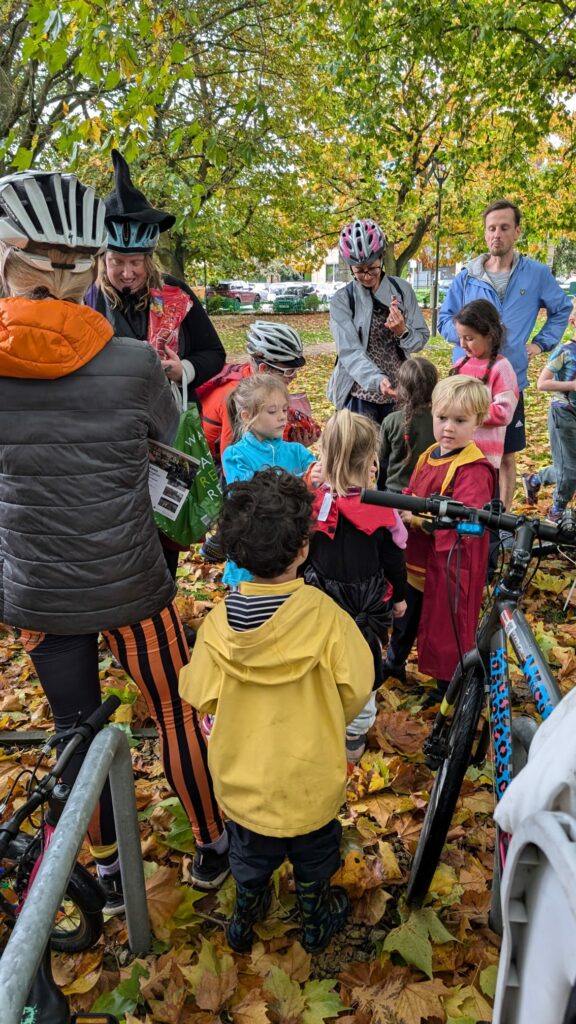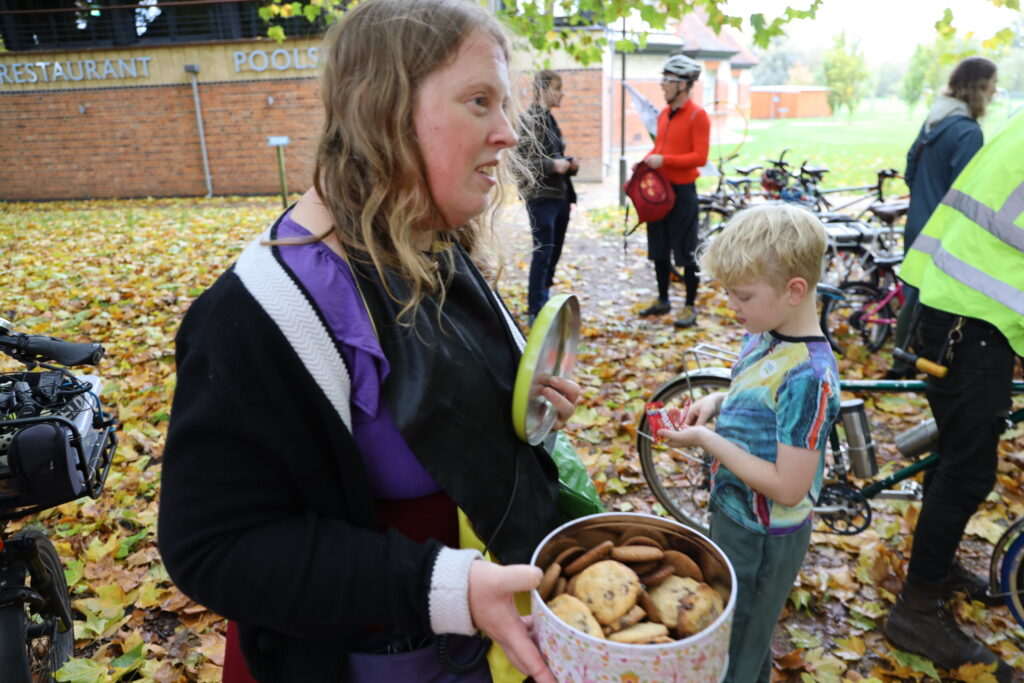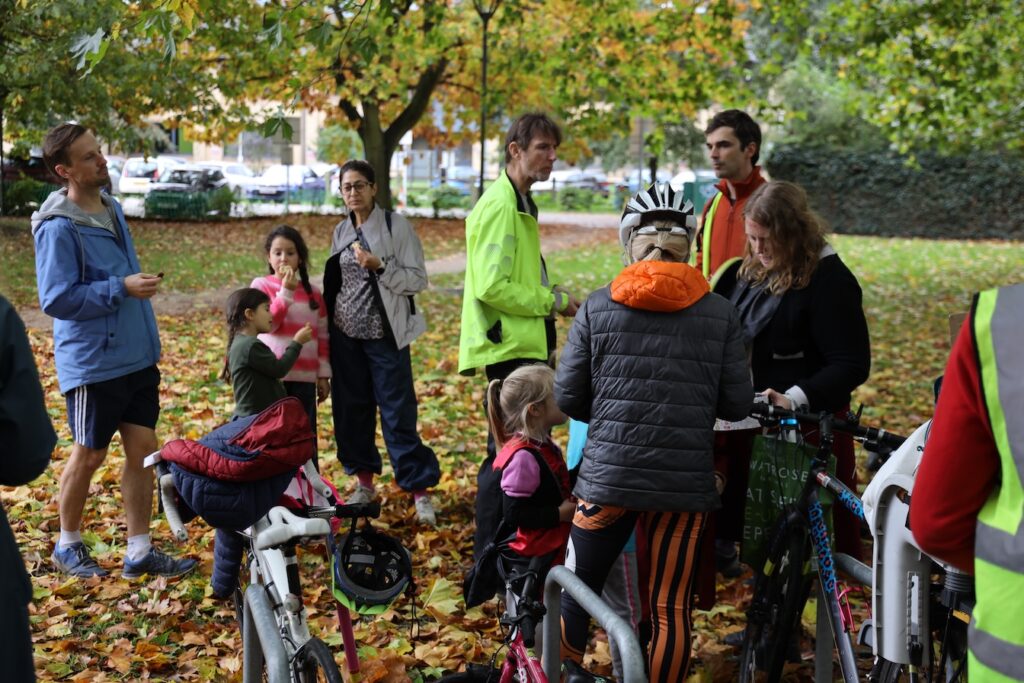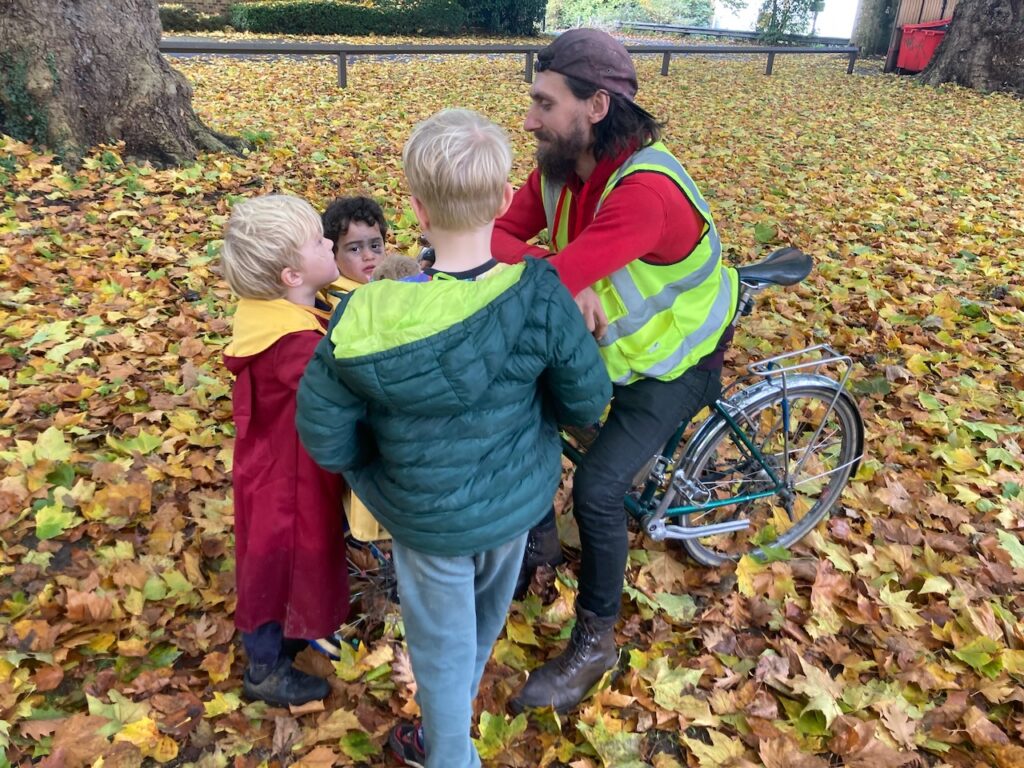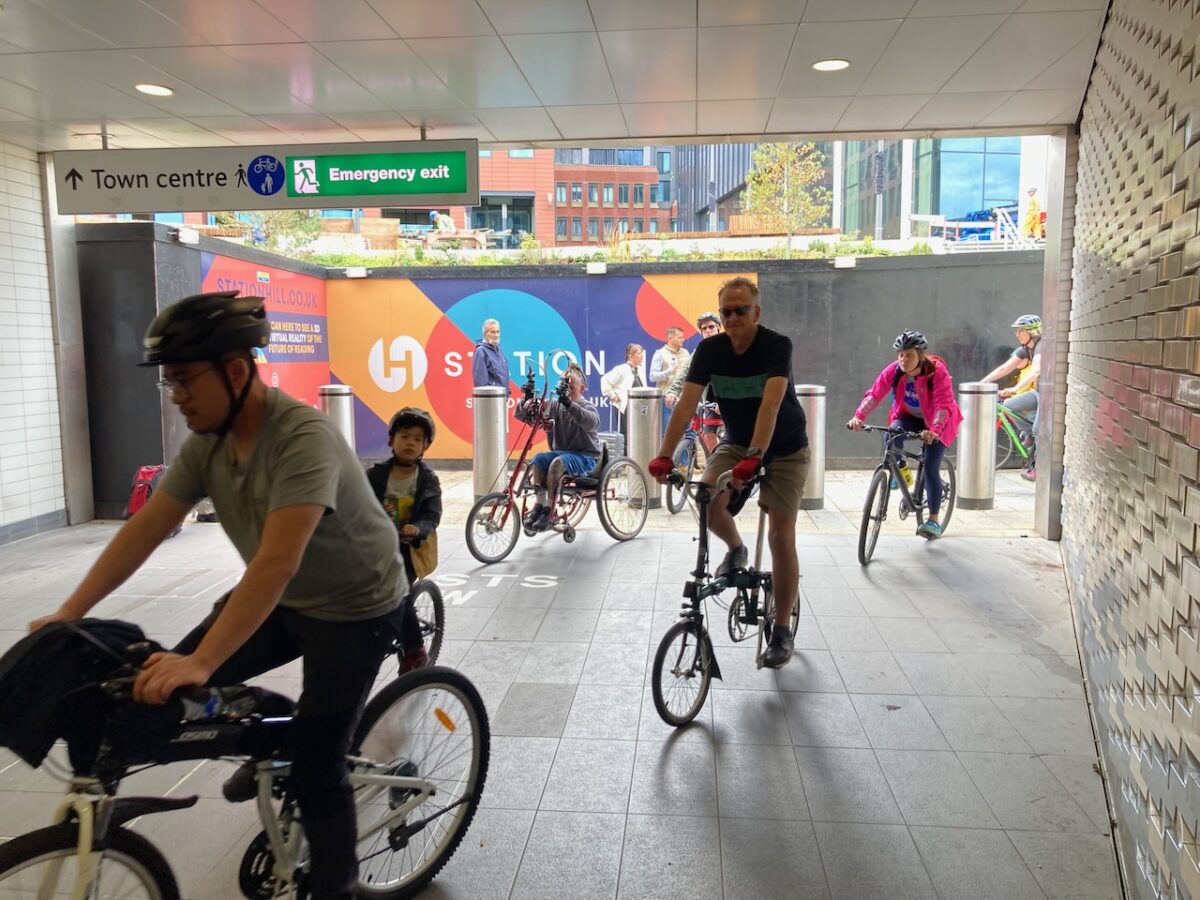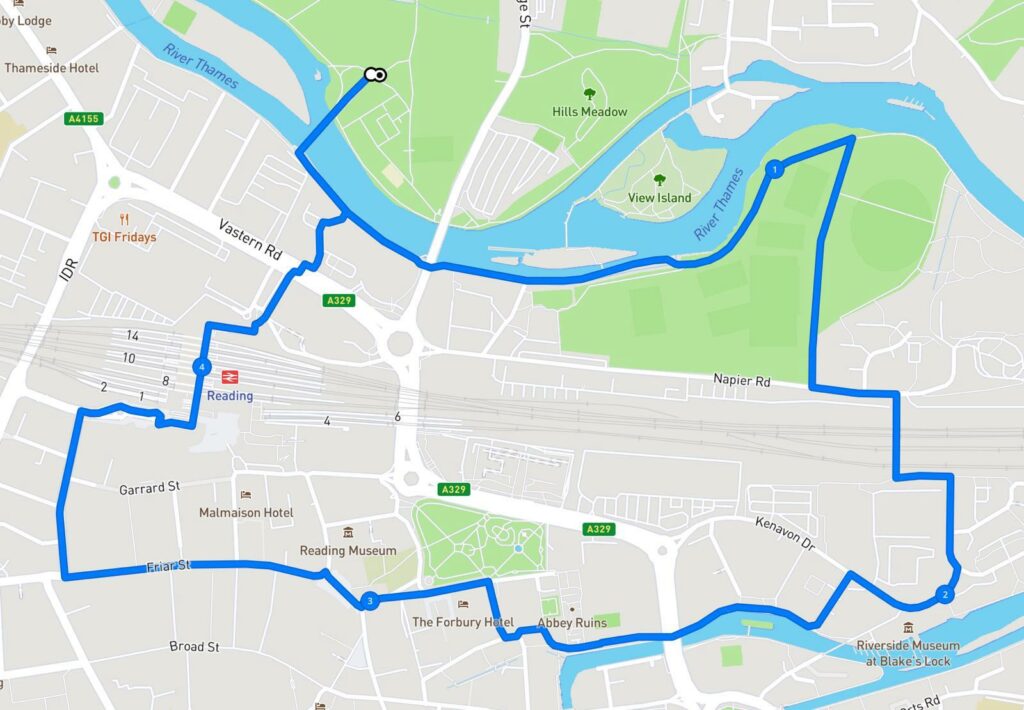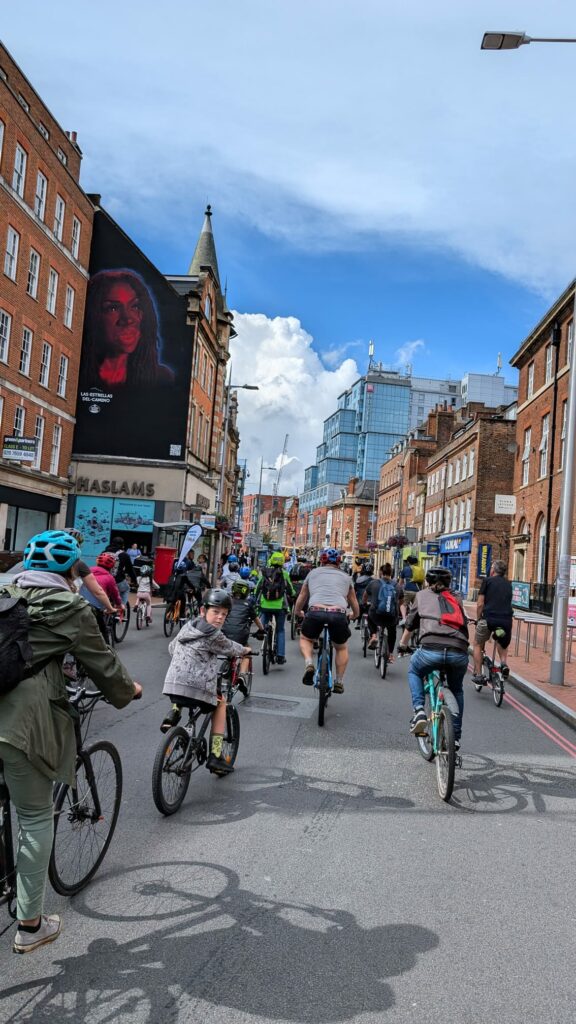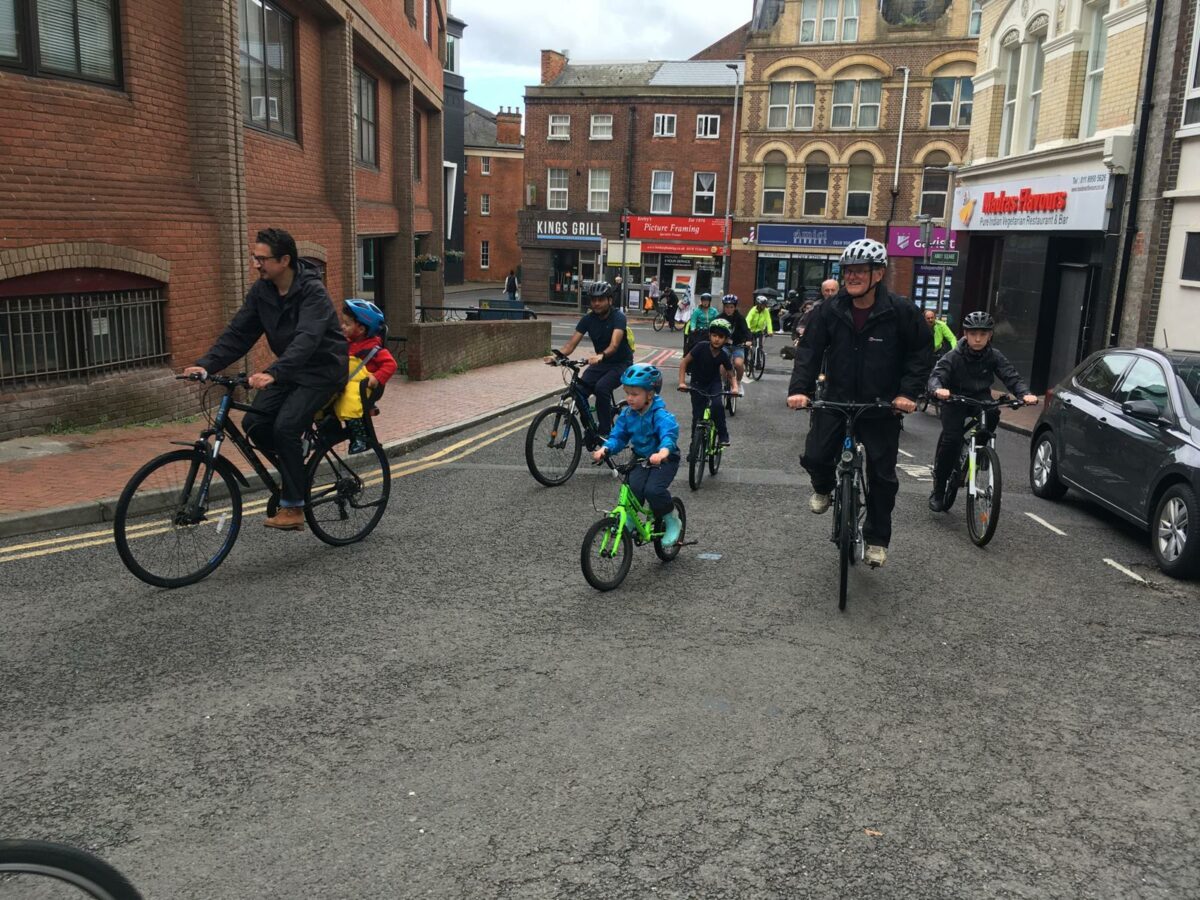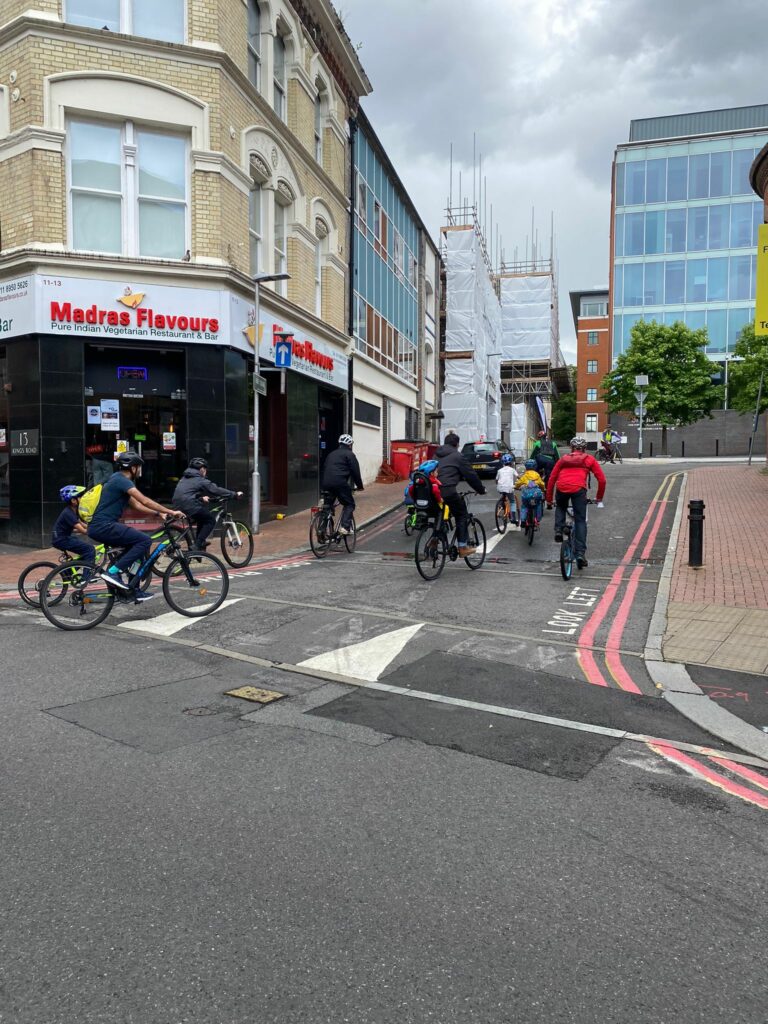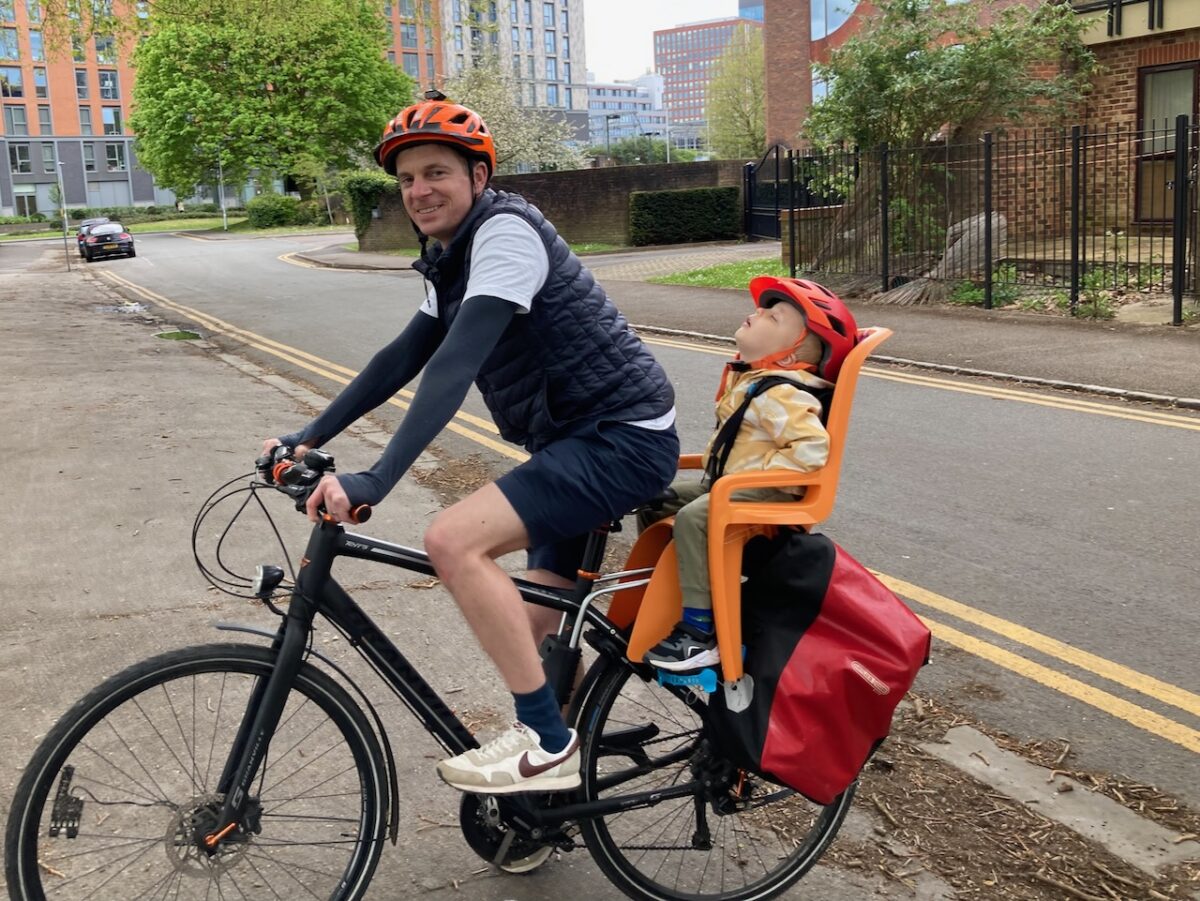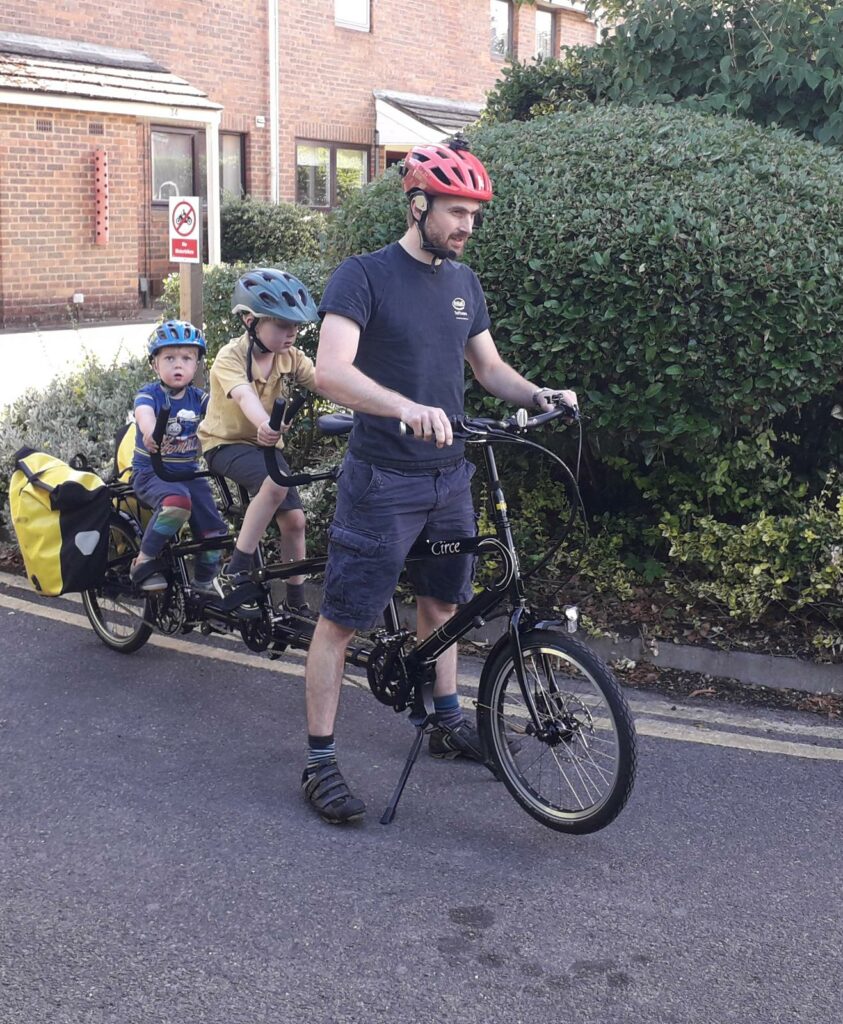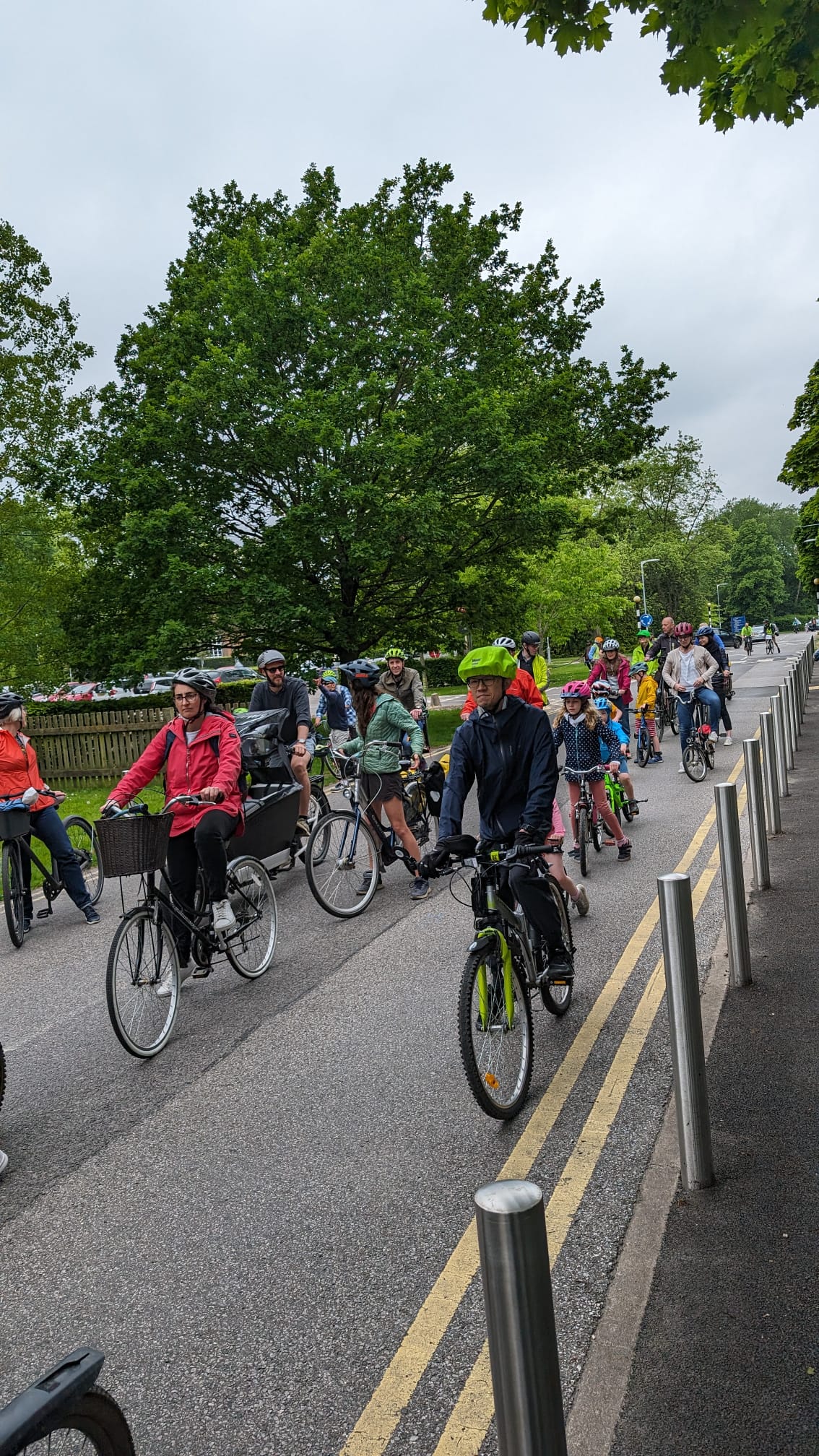Last week’s ride took place at the University of Reading Community Festival. We had around 50 riders joining us, including one special and unexpected guest, Yuan Yang, MP for Woodley and Earley. I had a chance to speak briefly with her about Kidical Mass, and our aims to highlight the need for child friendly cycling infrastructure. Yuan Yang commented, “When it comes to urban planning, children are the canaries in the coal mine.” How wonderful it would be for everyone if all of our cities were designed to meet children’s needs! Clean air to breathe, public spaces to play and socialise, and cars tamed and contained so that people can travel safely on foot, or by bike or public transport.

It’s local government (our councillors) who decide where exactly in the borough to spend any money there is to spend on active travel. However, it’s central government (our MPs) who decide how much money that is and what the parameters are on how it’s spent. We asked Yuan Yang to be a voice asking for enough active travel funding to meet the clear need.
The ride itself was great fun and our marshals were rather more relaxed than usual – the university site has low speed limits on the road, and many car-free bike paths, which is great for small children. But we did venture onto the surrounding roads once or twice to demonstrate that you can cycle to nearby schools by venturing through campus – if, of course, you have a safe path to campus from your house.
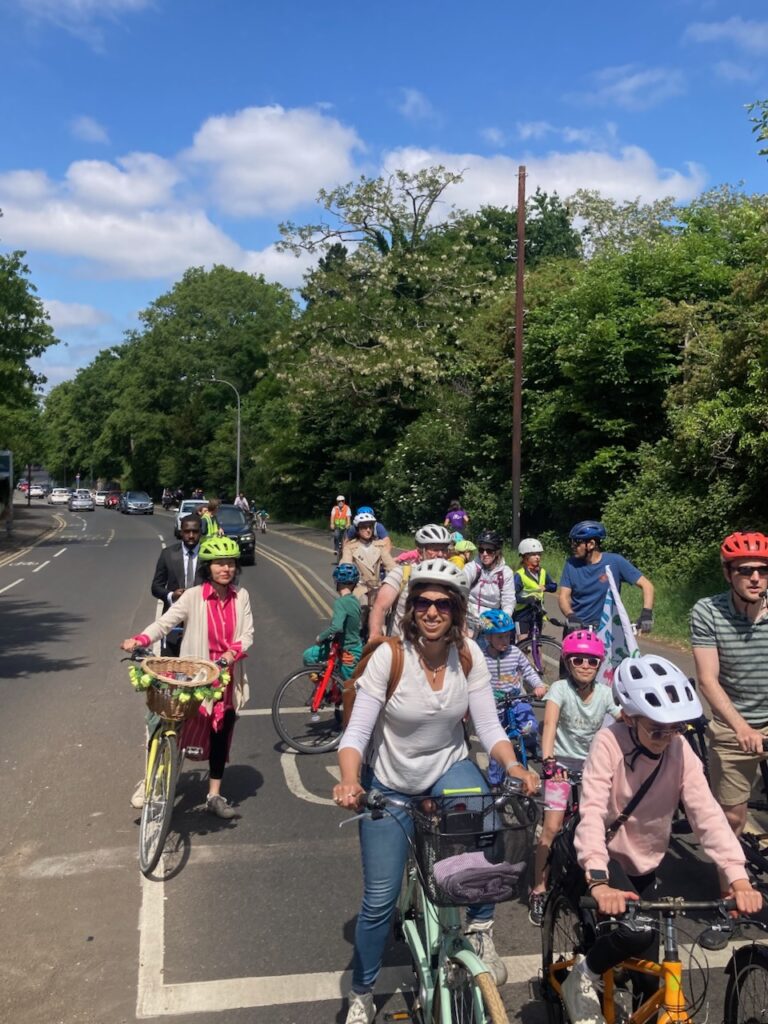
Kidical Mass also had a stand at the festival, shared with our friends at Reading Cycle Campaign. We had a bracelet making activity for kids to do and a dot survey for cyclists (young and old) to express how they they feel about cycling in Reading. The results were interesting – the top two questions told a clear story that, although we have some nice cycle paths in Reading, what we don’t have is a safe and connected network of routes. You can find a place to go for a perfectly nice weekend afternoon ride, but if you want to go from home to school or work the infrastructure just isn’t there.
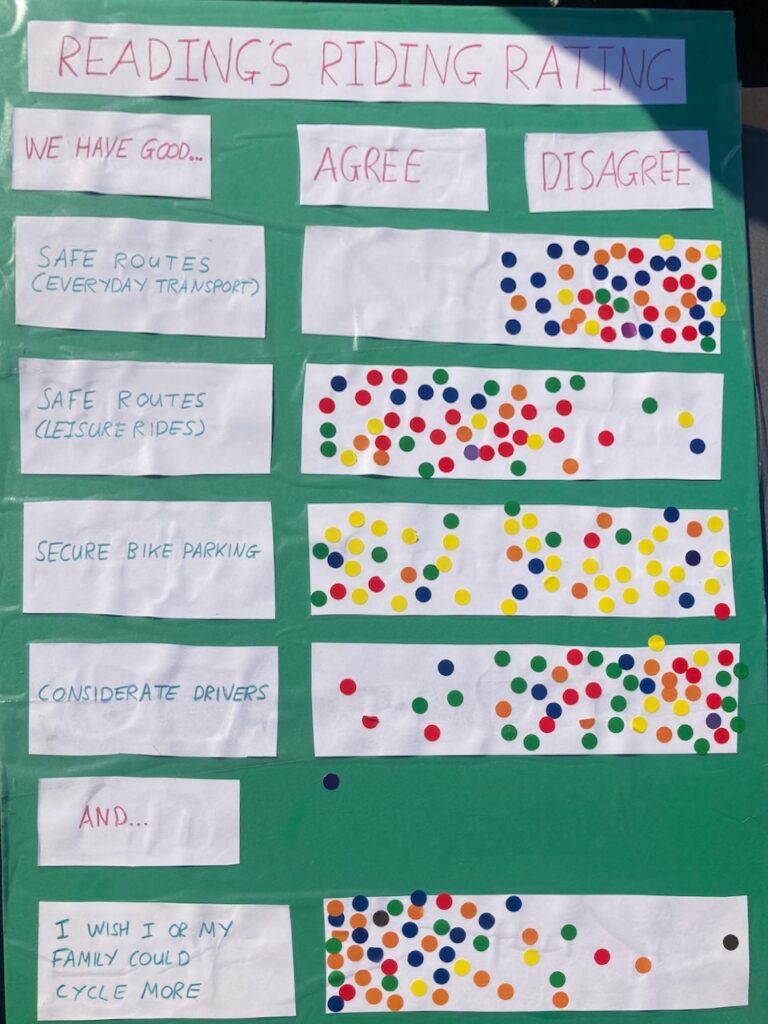
We could also see that poor driving is perceived as a problem, and the provision of bike parking is an issue for some. And (perhaps unsurprisingly given the people who will have stopped by our stall) almost everyone wanted to be able to ride their bikes more. Perhaps if we can build safe connections between the existing cycle paths we can make that dream a reality.
Especially for children, an entire route can be made unusable by a bad junction. Imagine as an adult going for a 50 mile bike ride on entirely segregated and beautiful bike paths, apart from one point where you have to cross a motorway on the carriageway. Which bit would you consider when deciding whether or not you could use that route?
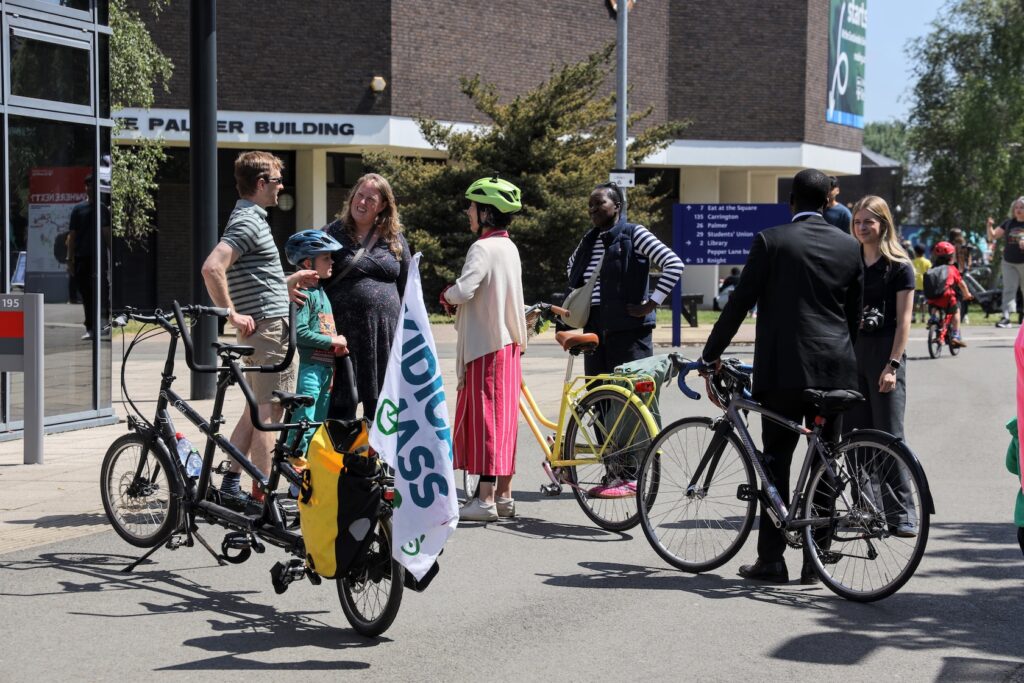
Yuan Yang is one person who does insist on riding her bike around (you could tell that this was not just something she said because she thought we’d want to hear it – her team were joking with her about how this makes their lives rather more interesting!). I think it’s really great when people with decision making power are on the ground to see the infrastructure issues and pinch points for themselves. I hope in time we can have more focus on what tweaks and connections are needed to build a proper cycle network, as well as building standalone paths. To get there we will need more elected representatives who understand and care about the issues.
If you’d like to join your voice with ours to campaign for this future then please come and join us at our next rides:
- in Wokingham on Sunday 22nd June for the Wokingham Bikeathon
- or in Reading on Sunday 6th July
